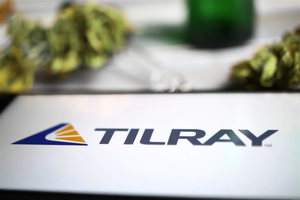The "South Africa Cement Industry Market Size & Forecast by Value and Volume Across 80+ Market Segments by Cement Products, Distribution Channel, Market Share, Import - Export, End Markets - Databook Q2 2025 Update" report has been added to ResearchAndMarkets.com's offering.
The cement market in South Africa is expected to grow by 8.1% annually to reach US$1.08 billion in 2025. The cement market in the country recorded strong growth during 2020-2024, achieving a CAGR of 8.7%. Growth momentum is expected to remain positive, with the market projected to expand at a CAGR of 7.6% during 2025-2029. By the end of 2029, the cement market is projected to expand from its 2024 value of US$1.00 billion to approximately US$1.46 billion.
This report provides a data-rich, forward-looking analysis of cement industry, covering market size, pricing trends, production, consumption, and segment-level performance from 2020 to 2029. It examines cement demand across key residential, non-residential, and infrastructure sectors alongside granular segmentation by cement type, distribution channel, end-user profile, and city tier.
South Africa's cement industry is experiencing a critical transition marked by constrained private sector activity, infrastructure-led demand revival, and intensified competition from imports. Local producers are recalibrating operations through energy diversification, digital transformation, and cost containment to manage prolonged margin pressure. Regulatory interventions such as import tariffs and decarbonization frameworks are shaping the strategic environment.
While aging infrastructure and government housing programs are stabilizing base demand, inconsistent public sector execution, load shedding, and rail inefficiencies continue to impede consistent supply. Players that align with localization, green procurement policies, and circular economy models will be better positioned for long-term resilience. The industry's next phase will depend on regulatory stability, energy reform, and the pace of infrastructure rollout under South Africa's National Development Plan.
South Africa's cement industry faces a structurally constrained but strategically important landscape. While short-term demand is stabilized by infrastructure and housing investments, cost and regulatory headwinds continue to challenge profitability. As energy instability and environmental regulation reshape the operating context, adaptability becomes a critical success factor.
Firms that enhance fuel flexibility, scale low-clinker product lines, and digitize operations will be better equipped to manage volatility and qualify for green public procurement. Proactive localization, rail-independent logistics, and cross-border agility will also define long-term competitiveness. With sustained public spending and strategic clarity, the sector can support inclusive infrastructure delivery while advancing toward decarbonization and supply chain resilience.
Public Projects and Urban Housing Are Stabilizing Cement Demand
- Public Infrastructure Maintenance is Driving Bulk Cement Volume: Road rehabilitation under SANRAL and water infrastructure restoration are key demand drivers in provinces like Gauteng, Western Cape, and KwaZulu-Natal. PPC and AfriSam have ramped up regional dispatches aligned with public works in sewerage upgrades and bulk service delivery. Cement use in dam upgrades and bridge restorations is supporting public procurement demand, particularly for sulfate-resistant cement.
- Social Housing Programs Continue to Generate Bagged Cement Demand: Projects under the Department of Human Settlements, including Breaking New Ground (BNG) and informal settlement upgrades, remain active in low-income areas. Provinces such as Eastern Cape and Limpopo have reported increased use of blended cements for township developments and basic services.
- Private Construction Remains Constrained by Economic and Power Instability: Developers have postponed new projects due to rising input costs, high interest rates, and electricity supply disruptions. Commercial construction, particularly office and retail, remains sluggish, with activity focused mostly on logistics and warehousing near major transport corridors.
Strategic Adjustments and Sustainability Initiatives are Taking Center Stage
- Import Tariff Enforcement is Supporting Local Competitiveness: The South African government approved anti-dumping duties on cement imports from Vietnam and China in 2023, shielding domestic producers. Local firms have regained some pricing power in coastal provinces, where Asian imports had previously undercut domestic clinker-based products.
- Blended Cements and Alternative Fuels Are Expanding: PPC has increased the production of fly ash and slag-blended cements, especially in Gauteng and Mpumalanga, to reduce clinker factor. AfriSam and Sephaku Cement are scaling up the use of alternative fuels, including biomass and waste-derived fuels, to manage energy risk and carbon intensity.
- Digital Plant Optimization and Distribution Tech Are Being Deployed: AI-enabled kiln optimization and real-time maintenance tracking are being rolled out to improve operational reliability amid load shedding. Firms have launched digital truck booking and fleet tracking systems to mitigate delays caused by rail disruptions and port backlogs.
Production Is Constrained by Energy, Raw Material, and Transport Issues
- Load Shedding and Grid Instability Are Raising Production Costs: Frequent electricity outages have disrupted kiln operations and extended production cycles, increasing per-ton cement costs. Producers are investing in diesel generators, solar arrays, and battery backups, though capex limitations slow wide-scale deployment.
- Raw Material Licensing and Quarry Rehabilitation Rules Are Tightening: Environmental regulations now require detailed rehabilitation plans and social engagement, delaying quarry permit renewals. Some firms are increasing limestone beneficiation to extend quarry life and reduce reliance on new license applications.
- Rail and Port Infrastructure Weakness Is Affecting Supply Chains: Inadequate rail availability and congestion at Durban and Ngqura ports have disrupted cement and clinker transportation, especially to export hubs. Cement producers are shifting back to road freight, increasing logistics costs and lead time variability.
Moderate Growth Outlook Tied to Public Spending and Green Policy Adoption
- Public-Sector Infrastructure Rollout Offers Medium-Term Stability: Commitments under the Infrastructure Investment Plan (IIP) and Presidential Infrastructure Coordinating Commission (PICC) remain active. Priority sectors include transportation, sanitation, and energy support infrastructure - areas with direct cement application potential.
- Green Procurement Standards Will Shape Product Development: National Green Building Standards and carbon disclosure mandates are prompting firms to accelerate low-carbon cement lines. Government projects are increasingly applying Environmental Product Declarations (EPDs) and lifecycle emissions benchmarks in procurement.
- Regional Trade and Export Channels May Gain Traction: South African producers are exploring clinker and cement exports to Mozambique, Botswana, and Namibia to balance domestic capacity utilization. Trade via Beira and Walvis Bay corridors is under strategic review, though cross-border logistics remain a challenge.
Key Risks Stem from Energy, Regulatory, and Market Volatility
- Ongoing Power Supply Issues Threaten Operational Continuity: Load shedding Stage 4 and above frequently halt kiln operations, impacting throughput and contractual deliveries. Energy cost pass-through to customers remains limited, keeping pressure on operating margins.
- Policy Uncertainty and Delays in Incentive Disbursement: Inconsistent rollout of infrastructure spending and lack of clarity in carbon pricing frameworks hinder long-term investment planning. Some incentive-linked decarbonization programs have experienced delays in fund release, slowing fuel transition projects.
- Import Resurgence and Regional Competition Remain a Concern: While tariffs have reduced import volumes, loopholes and grey-channel imports remain a threat, particularly in KwaZulu-Natal and Eastern Cape. Competition from Zimbabwe and Mozambique-based producers is increasing in border provinces due to lower labor and energy costs.
Scope
South Africa Cement Industry Overview
- Cement Production KPIs: Volume and Value
- Cement Consumption KPIs: Volume and Value
- Average Cement Price Trends: Tracked at overall and cement-type level
South Africa Cement Market by Type of Cement
- Portland Cement
- Blended Cement
- Specialty Cement
- Green Cement
Blended Cement Market by Subtypes of Cement
- Type IS(X) - Portland-Slag Cement
- Type IP(X) - Portland-Pozzolan Cement
- IL(X) - Portland-Limestone Cement
- Type IT - Ternary Blended Cement
Specialty Cement Cement Market by Subtypes of Cement
- Rapid Hardening Cement
- High Alumina Cement
- White Cement
- Sulfate-Resistant Cement
- Other Niche Specialty Cements
South Africa Cement Market by Key Sector
Residential Construction
- Multi-Family Housing
- Single-Family Housing
Non-Residential Construction
Commercial Buildings:
- Office Buildings
- Retail Spaces
- Hospitality Facilities
- Restaurants
- Sports Complexes
- Other Commercial Properties
Industrial Buildings:
- Manufacturing Units
- Chemical & Pharmaceutical Facilities
- Metal and Material Processing Plants
Institutional Buildings:
- Healthcare Facilities
- Educational Institutions
- Other Institutional Structures
Infrastructure & Other Construction
South Africa Cement Market by Distribution Channel
- Direct Distribution (B2B Sales)
- Indirect Distribution (Retailers, Dealers)
South Africa Cement Market by End-User
- Ready-Mix Concrete Producers
- Concrete Product Manufacturers
- Individual Consumers (Self-use)
- Other Industrial/Commercial Users
South Africa Cement Market by Location Tier
- Tier-I Cities
- Tier-II Cities
- Tier-III Cities
South Africa Cement Trade Dynamics
- Key Export Destinations
- Key Import Sources
Competitive Landscape: South Africa Cement Market
- Market Share Analysis of Key Players
For more information about this report visit https://www.researchandmarkets.com/r/lk61y2
About ResearchAndMarkets.com
ResearchAndMarkets.com is the world's leading source for international market research reports and market data. We provide you with the latest data on international and regional markets, key industries, the top companies, new products and the latest trends.
View source version on businesswire.com: https://www.businesswire.com/news/home/20250714888690/en/
Contacts
ResearchAndMarkets.com
Laura Wood, Senior Press Manager
press@researchandmarkets.com
For E.S.T Office Hours Call 1-917-300-0470
For U.S./ CAN Toll Free Call 1-800-526-8630
For GMT Office Hours Call +353-1-416-8900






